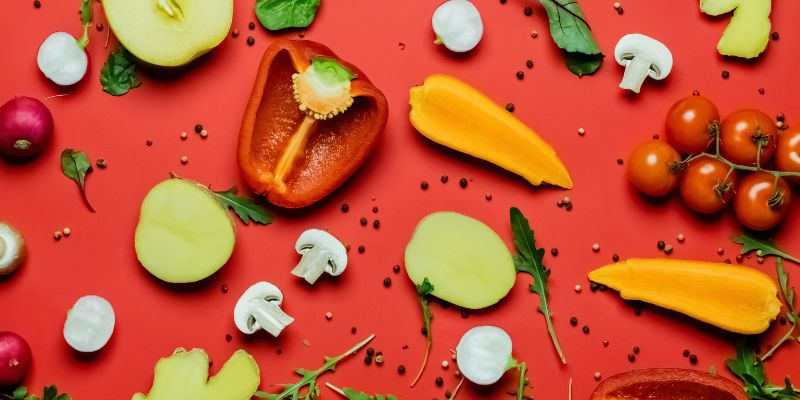Our top tips to reduce food waste and your shopping bill
Food waste is a big problem in the UK. Leading sustainability charity WRAP estimated that 9.5 million tonnes of food within households, hospitality, retail, wholesale sectors and the food service is wasted each year.
However, good news – it’s a household issue that can be tackled! No more wilted vegetables at the back of the fridge or forgotten leftovers, with our top tips from the team at SaveMoneyCutCarbon, you can transform your kitchen habits for the better.
Don’t stress, it won’t happen overnight but these easy tips can massively reduce your food waste. So, that’s less money wasted, less carbon emissions and less plastic, wow!
1. Try planning your meals and check to see what’s lurking at the back of your cupboards!
Meal prepping isn’t just for fitness fanatics or people trying to be healthier, it’s great for reducing waste and saving money!
I noticed that I kept shoving stuff in my freezer without eating what was already in there. Now, every Sunday I go through my kitchen to work out what needs eating, and when.
You don’t have to prep every single meal seven days of the week – that would take a lot of time, that most of us don’t have. Start off by prepping a few meals of the week, Shepherd’s Pie or Spag Bol are perfect for this.
I like to cut up vegetables at the beginning of the week and store them in a beeswax wrap so I can take a handful in the morning for my packed lunch, a huge time saver for early mornings!
Knowing what’s already at home means you won’t keep buying the same thing in your weekly shop and planning ahead means you won’t forget about all of the fresh food you brought in that moment of saintliness, and it won’t go to waste.
Rachel has a top tip! If any food is starting to near its expiry date, she throws it in a casserole which is a sneaky way to get the kids to eat more veggies without realising.
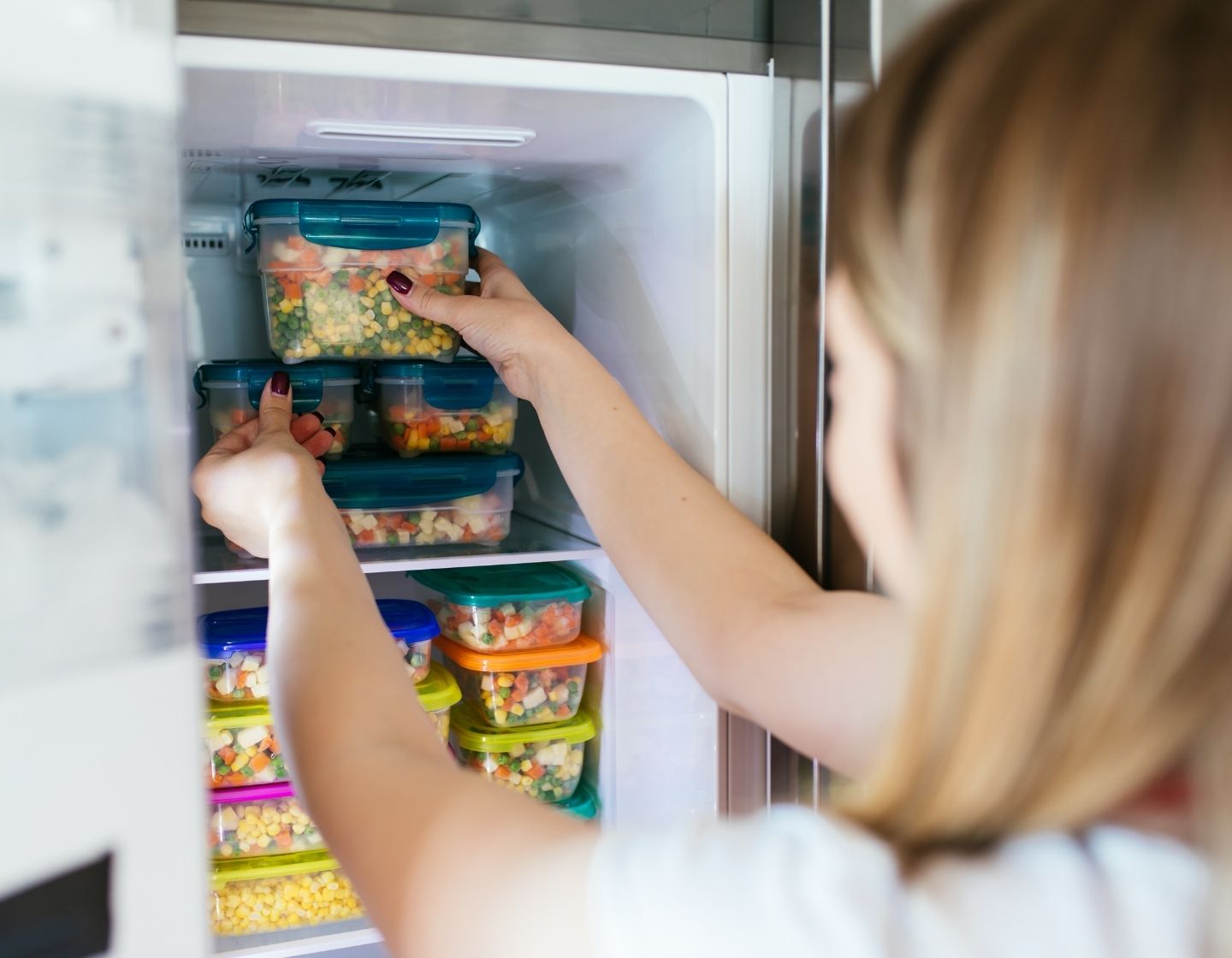
2. Make a shopping list and stick to it!
Basically, only buy what you really need. If a recipe only needs one onion, don’t buy a whole bag – this is a great way of reducing waste, saving money and reducing plastic all in one go!
If you’re noticing that you’re wasting a lot of one particular thing, cut down on how many or how often you buy it.
Rachel also uses a shopping list app to help plan for her family better and stop overspending on things she doesn’t really need.
Similarly, remember beauty is only skin deep! So called ‘ugly’ fruits often get tossed before they even hit the supermarket shelves, or they’re picked last by a consumer (if at all). I remember my grandma always purposefully choosing the imperfect fruit and vegetables to prove a point to all of us – that the taste and nutrition is exactly the same.
Companies like Odd Box and Wonky Veg Boxes actually rescue and deliver the produce that isn’t the best looking straight to your door. Also supermarkets like Aldi and Morrison’s actually sell Wonky Fruit and Veg!

3. Learn to store food correctly to stay fresher for longer
There is most definitely a way to store food correctly to ensure it lasts for longer. But once you know what you’re doing, it’s an easy habit to maintain. Just like a bunch of flowers, some vegetables such as carrots and celery fare better when they are left in a jar of water. However, others like cucumbers and tomatoes don’t actually like to live in the fridge at all.
Find out more on what vegetables like here.
An easy rule of thumb to remember is the ‘first in, first out’ mantra, which means arranging food according to date. Just like supermarket shelves, keep rotating your fridge and cupboards so that what needs eating up first is right in front of you.
A common thing that gets thrown away in my household is bread. We’re a carb loving family: we love bagels, toast, wraps, crumpets – the lot, but that often means there’s the end of a mouldy loaf at the bottom of the bread bin. Luckily, Tim has a top tip for us! He buys a big tasty loaf of fresh sourdough (way more delicious and no plastic packaging, yay), slices it and freezes it. Then he takes out what he needs day by day.
Or you can actually bring stale bread back to life using a Stasher bag, as follows:
- Preheat your oven to 190°C
- Slice your bread. But if your bread has gone stale and it’s difficult to cut, lightly pat the sides with water.
- Transfer the slices into a Stasher and seal the bag with a small opening. Lay the Stasher on a baking sheet and bake for six to eight minutes.
- Let it cool and carefully open the Stasher (it will be hot so be cautious), to see if the bread has softened. If it’s still a bit too hard, add a little more water and return it to the oven for a few more minutes.
- Using tongs, remove the bread from the Stasher and it’s ready!
Martyn also reminds us that if you open a jar, or any type of food really, ensure you re-package it correctly in the fridge to extend its life for longer. For example, pop it in an air-tight Stasher or cover it with a beeswax wrap and rubber band.
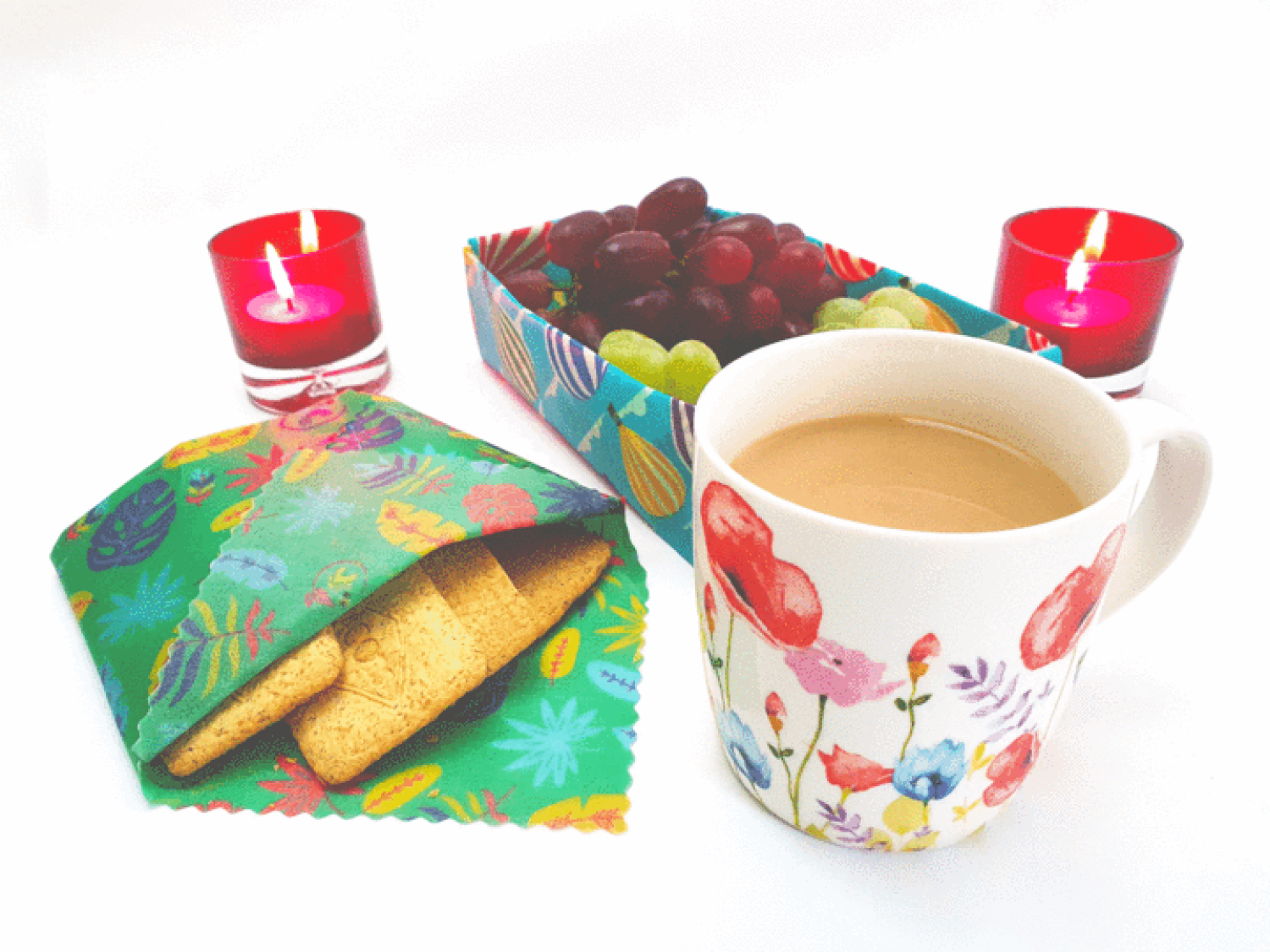
4. The freezer is your friend
One of the easiest way to reduce food waste is to save any leftovers. Whether it’s only pieces of a meal or a second helping of an entire dish, you can save pretty much everything! For example, when Hazel roasts cauliflower, she also roasts the leaves with some oil, salt and pepper – they go crispy and they’re delicious.
Hazel, Liz and Kirsty all swear by Stasher bags for saving leftovers in the freezer or storing them for lunch. Stasher bags are perfect for this as they can go straight from the freezer to a pan of boiling water or the microwave, no mess and hassle free!
You can jot down the date you put them in the freezer using a marker pen which can be easily wiped away so you know when it needs eating by. And, as they’re clear, you know what’s inside just by a quick look.
You can freeze fruit, vegetables and herbs too! Check out more of our tips for filling up your freezer.
Our Boll**ks to Cling Film is even easier. All you need to do is cover your plate, bowl or mug with the silicone food cover to preserve your food. No transferring needed, just space in the fridge.
Liz finds frozen leftovers a lifesaver living with active teenage boys! There is always something in the ‘freezer roulette’ as they like to call it, to be devoured before football, swimming or kung fu.
I personally like to include a leftover day, which means raiding the freezer for everything leftover from the previous couple of weeks; either by eating an entire portion of leftover curry or making some stock from vegetable scraps.
Top tip from Martyn: if you don’t like to eat the same thing twice, then get creative. He buys some shortcrust pastry and makes pies and pasties out of his leftover curries. Or, perhaps my favourite suggest – get a dog (although I don’t recommend feeding your dog leftover curry).
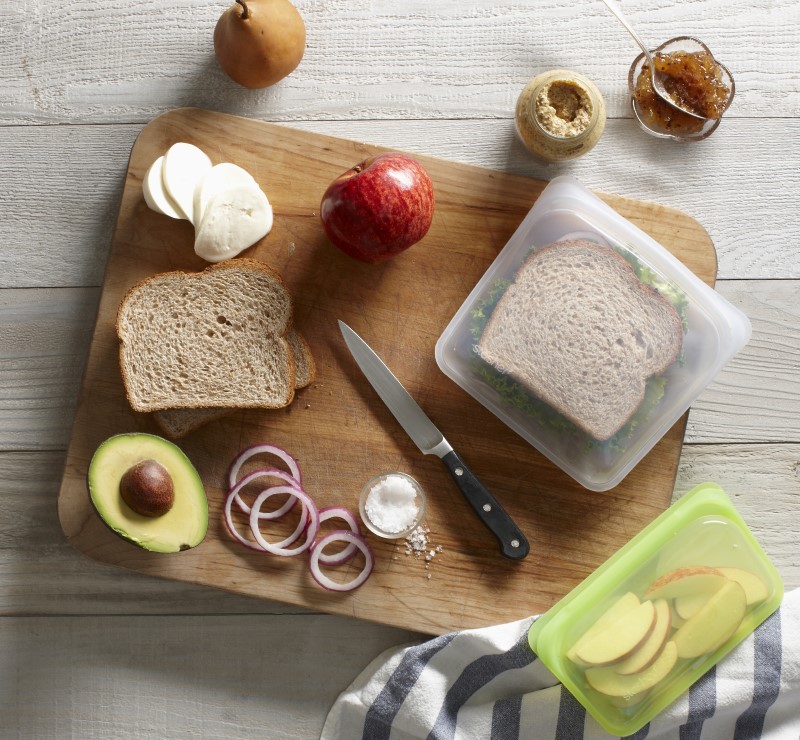
5. Repurpose your fruit and vegetables
Don’t throw out your overripe bananas! Freezing fruit is an easy way to extend their life and help you enjoy seasonal, local produce all year round. All it involves is a few easy steps and it’ll last for up to nine months.
- Wash, dry and slice your fruit before removing the likes of pips and cores.
- Place the fruit on a layer of baking paper, spaced out.
- Freeze the fruit for two to three hours.
- Transfer the frozen slices into a storage bag like Stasher.
It’s better to use this process rather than shoving the slices in a Stasher to be frozen altogether because they’ll end up in one big frozen blob. Then, you can use them to make delicious Summer smoothies.
You can also freeze odd bits of vegetables to make soup, pesto or vegetable stock.
I’ve recently started saving mushy bananas and avocados for making face masks, body scrubs and hair masks. They feel way more nourishing on my skin without the chemicals, and I know exactly what ingredients I’m putting on my body, which is important to me.
To make my banana hair mask all I do is mix an overripe banana with an egg and apply the mixture to my hair. I leave it in while I’m in the bath and let the nutrients soak in before rinsing it out.
If skincare isn’t your thing, they also make delicious ingredients for brownies and cakes.
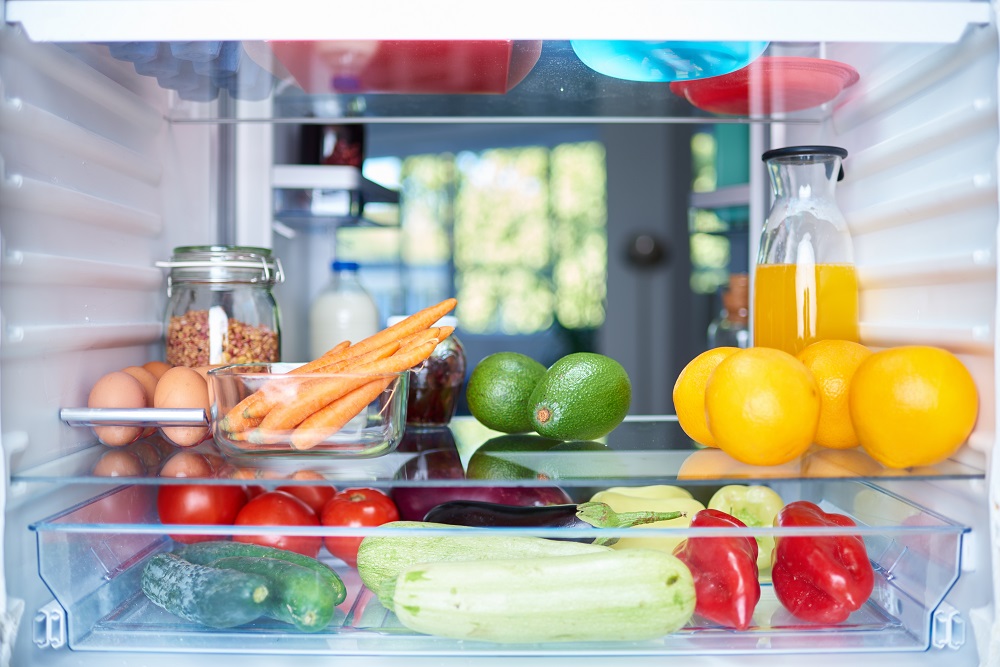
6. Find your Zen and eat intuitively
My final tip may be slightly unconventional, but it involves being in tune with your body. If you learn to understand your hunger cues and know how hungry you are, it can help to reduce your food waste. Remember, you can always go back for seconds if you want to and if your eyes happen to be a bit too big for your stomach, use the freezer!
Going forward, adopting a respectful attitude towards food is key. When I’m shopping, I like to remind myself of the entire process it took for the food to arrive on the supermarket shelf. I am less inclined to waste anything and I’m grateful for the Earth and resources around me, even the ones I cannot see.
Reduce your food waste with our sustainable living range.

